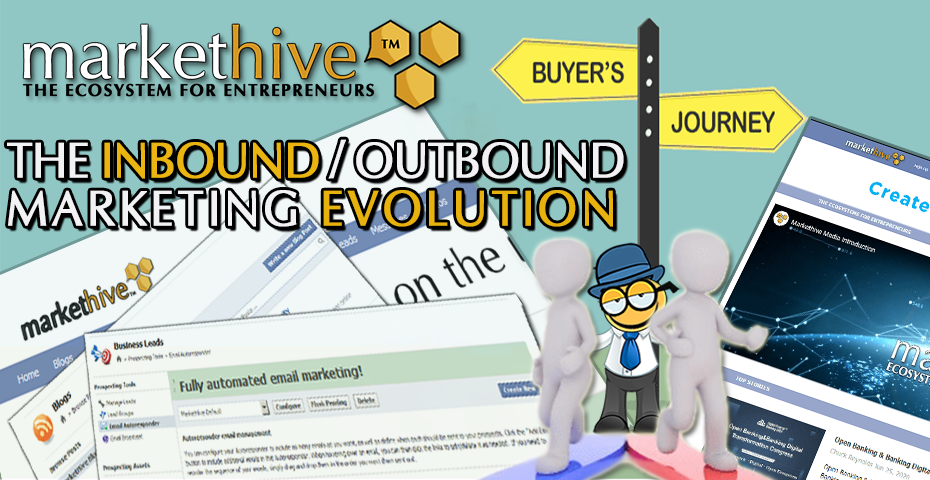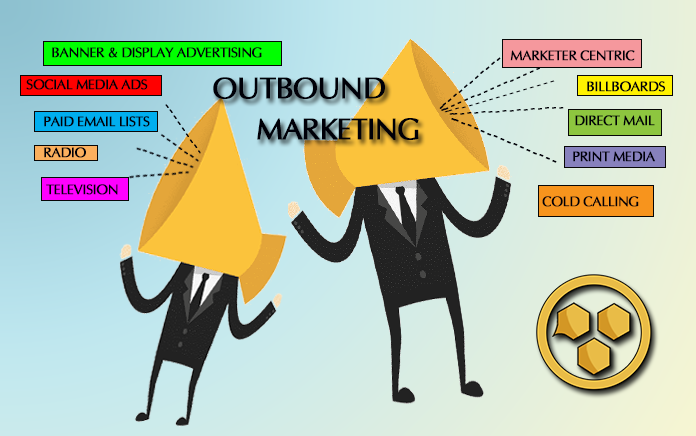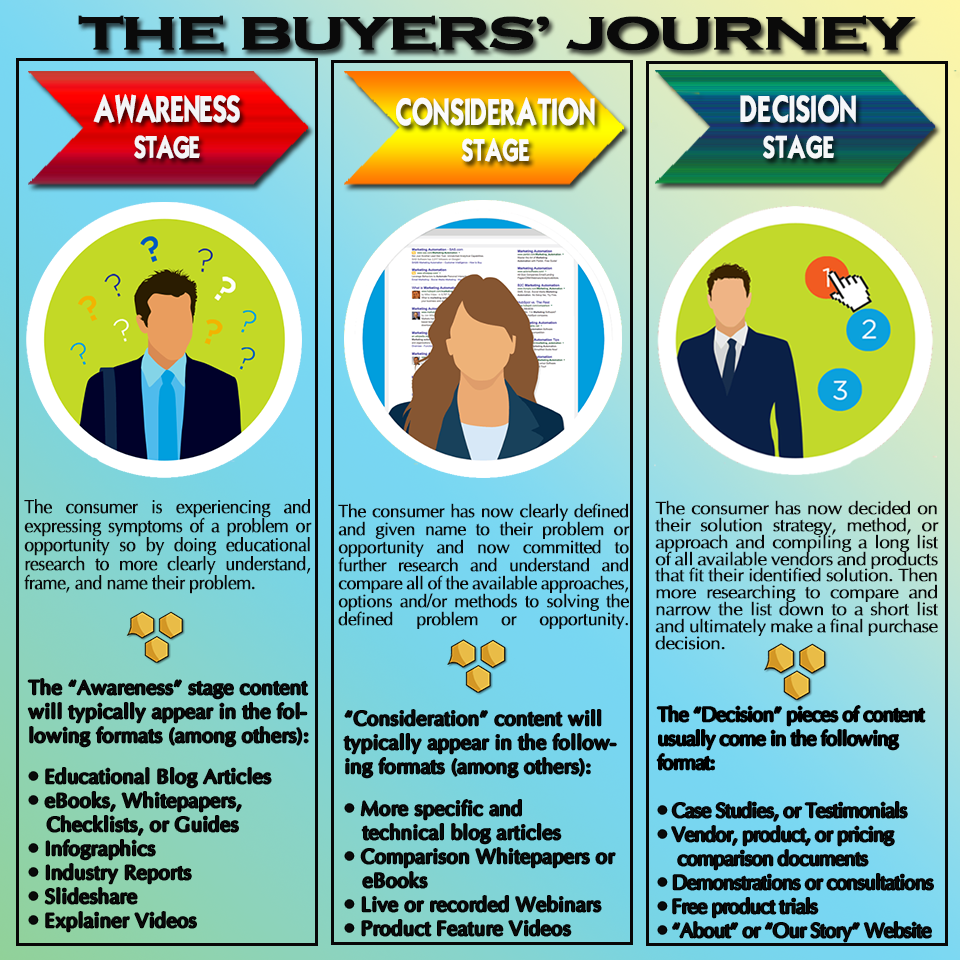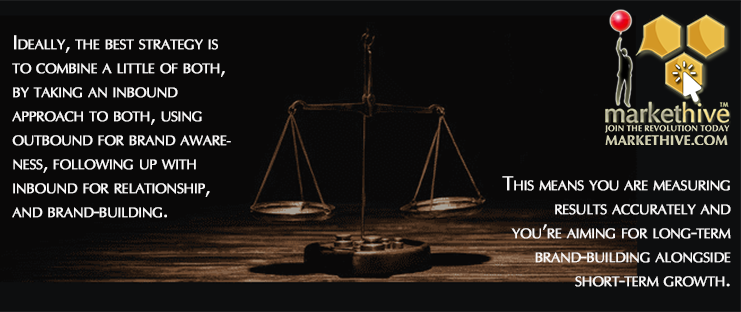


My introduction to online marketing consisted of a training course that heavily focused on a form of email marketing, mainly safelists, which I found to be a very confusing and overwhelming strategy that involved numerous email accounts and hundreds of advertising sites that took up all my time with very little results. After a while, I felt totally disillusioned and burned out with that and turned to social media marketing of sorts which was okay for a while but then became frustrating and nonsensical.
Then by chance, I came across Inbound Marketing and it all made sense to me. “Inbound marketing” was a term coined by Hubspot which was founded in 2005, but invented and established nearly a decade earlier by Markethive (operating as Veretekk) way back in 1996 and known as Automated Marketing. For many companies needing to cater to the customer and prospects’ needs and as competition became more fierce they turned to inbound marketing to help give them the edge.

Prior to inbound marketing, we relied upon more traditional methods known as Outbound Marketing which included TV, radio and print ads, billboards, etc. Then with the internet, came paid and rented email lists, banner and display ads, most social media advertising, pop-ups, and pop-unders, etc. In direct contrast to Inbound marketing, these tactics have traditionally been thought of as interruptions and frowned upon, labeled as invasive, and often seen as driving an ideal buyer away.
Outbound marketing aims at trying to reach as many people as possible, whether or not they are active buyers and in some cases has its merits.

Inbound marketing is a marketing strategy by which you drive prospects to your website rather than outwardly advertising your products or services. The idea is that bringing potential customers to your website will familiarize them with your brand and offerings through targeted content, tailored to the needs and basic questions of people and offering solutions. Ideally, you’ll build a virtual relationship with the prospect, making it more likely that they will choose your product or service when they’re ready to buy.
Typically inbound marketing involves blogging or content creation and integrates email marketing, marketing automation, social media monitoring & publishing, SEO, and analytics all in one. It incorporates landing pages and a content management system that assists you in optimizing your content.
Outbound marketing brings your offering to your prospects. Inbound marketing brings your prospects to you.
Inbound Marketing is a marketing methodology focused on attracting, educating, and empowering consumers via relevant content that actually helps and guides them until they are ready to purchase your product or service. That road to purchase is the buyer’s journey, an active exploration or research process that a buyer goes through, prior to and leading up to the actual purchase.
Back in the day, when I needed to buy something I would pace the shopping mall, searching and comparing until I found what suited me. When I bought my car I went directly to the car yard, talked to the salesperson to learn my options, get answers to my questions, took it for a test drive, and bought it.
Now I search online before I take a step out of my home and go directly to that store I found most helpful online or maybe buy it online. The way we buy is evolving and according to Google, buyers on average now conduct 70% or more of their research online to help them with a purchasing decision, even before they think about contacting someone in sales or reaching out to a company for more information on their products and services.
With any sales and marketing method, it must continue to evolve just as consumers’ buying behaviors are evolving. So what does that mean for marketers in the digital world?
Inbound marketing is a strategic process that has several elements to it and some of those elements are not just technical but to gain an insight into the psychological aspect. We need to understand what stages a prospective buyer goes through before making a purchasing decision.
Another way of looking at it is that inbound marketing is designed to better align you and your business with the Buyer’s Journey, which is becoming the natural process that today’s buyer goes through when searching for a solution online.
The internet, along with inbound marketing platforms, has made it easier for marketers to engage customers at the various stages of their journey using content marketing. That’s one of the main reasons that 88% of B2B marketers are using custom content marketing, which is up a whopping 86% from 2015.
The Buyer's Journey was first described in 1968, long before the internet, and was perceived as a linear process. However, today’s customers are sophisticated, savvy consumers who do their research and the internet has made it very easy to access a wide range of information, so these stages are not so cut and dried and it is why we need to be customer-centric in our inbound marketing efforts, with consistent and current relevant content.
Each stage of the inbound buyer’s journey requires unique content types that range from website pages and blog articles to downloadable offers and video demonstrations. So the new Buyer's journey takes place online and inbound marketers have a golden opportunity to go the extra mile by helping them reach a decision with custom content that will attract and delight the potential buyer.
The three basic stages of the Inbound Buyer's Journey are Awareness, Consideration, and Decision.
Inbound marketing is designed to help prospects discover your business in the early stages of the Buyer’s Journey and to educate them on the benefits of your solution for them, all while building trust throughout the process.

Although inbound marketing is the preferred method and considered to be more successful due to its not only holistic but an empathic approach, outbound marketing, albeit marketer centric, still has a place, and to determine which one suits your purpose, you need to consider your specific business, audience, and marketing objectives.
One of the biggest advantages of inbound marketing and what gives it substance is that it focuses on providing value for prospects. It’s educational and in some cases non-promotional and as inbound marketing aligns with the Buyer's Journey, it builds a relationship between your prospects and brand and is not seen as an annoying interruption. Rather it helps the buyer as they are already researching and obviously ready to buy.
Another major strength of inbound marketing is the long term return on investment (ROI) Whether it be sweat equity or money that you’ve invested, this strategy tends to have slower results for the first few months, however, those initial stages are necessary to build your digital marketing assets. It allows you to build your presence online and rank higher in the search engines.
Eventually, the value of those assets will increase and your outlay to maintain or improve will be less. Digital assets like blog articles and perpetual choice offers can continue to generate leads years after they were originally created without costing an extra cent.
The biggest strength of outbound marketing is its ability to get in front of a large number of people quickly and build awareness. When it’s done correctly, you can launch an outbound marketing campaign, get seen by millions, and have new customers within a few weeks, but the results usually depend on the amount of money you invest.
The more you spend, the more results you get and when you stop investing, the results diminish. With outbound marketing, you don’t accumulate many tangible, long-term assets that continue to generate leads as you do with Inbound marketing. Plus, these days, outbound is generally more disliked by the consumer.
Having said that, there are businesses that have found great success by using inbound or outbound exclusively. There are many that have utilized both consecutively and have had tremendous results. Your marketing strategy really depends on your market, your type of buyer, and your goals.
What are you trying to achieve? Do you want to build brand awareness? Drive traffic? How many customers are you aiming to get and what’s your timeline for that goal?
Inbound marketing is the best long-term strategy, however, it will take time and probably won’t dramatically increase business in the first few months.
Outbound marketing, on the other hand, can help you get customers in the door quickly, but it comes with diminishing returns.
Ideally, the best strategy is to combine a little of both, by taking an inbound approach to both, using outbound for brand awareness, following up with inbound for relationship, and brand-building.
This means you are measuring results accurately and you’re aiming for long-term brand-building alongside short-term growth.
It’s important to consider how the tactics you deploy will affect your brand’s image. Launching an aggressive cold-calling campaign or obnoxiously posting fruitless or misleading advertisements too much on peoples’ newsfeeds may get a few sales, but how will that affect your reputation long-term?
You only want to use marketing tactics that your brand can be proud of and that your customers would approve of if they knew how you executed them. More often than not, the truth comes out and it’s incredibly difficult to overcome a bad reputation.
Free here : http://bit.ly/GetPaid2Join

Here at Markethive, we believe in an inbound-focused approach that also uses outbound marketing when appropriate. This means using outbound channels like the Banner program where you can purchase banner impressions from our Banner Impressions Exchange. Your banners are displayed internally at Markethive and externally on numerous domains.
This will successfully get your business in front of potential buyers, then by using Markethive’s inbound tools you will be focusing more on assisting with the buyer’s journey rather than selling upfront. This works because people are more likely to engage in a brand that helps them understand the buying process, instead of simply asking for their money.
Markethive has been in the Inbound Marketing business for 25 years and is an ever-evolving platform. Now integrated with Blockchain technology and cryptocurrency as of 2018, it’s certainly keeping up with the changes and advances the marketing realm is experiencing with many still stuck in the old school ways.
Markethive is always evolving and right now in the process of building a new engineering team to take its funnels (Pagemaker System) integrated into its landing pages which are groups or otherwise known as Storefronts. A self-replicating system will be added to these pages and aligning autoresponders, along with assignment rotators. This makes it Turnkey for members to just walk in and gain great results of a powerful inbound marketing campaign, utilizing another unique feature within this system - the CO-OP engine.
Free here : http://bit.ly/GetPaid2Join
Markethive delivers a proven Inbound Marketing platform outfitted with email autoresponders, blogging platforms, landing pages, social media broadcasting, Tracking analytics, SEO, backlinking automation, messaging, ecommerce, and SEO which is designed to build a large loyal long-term customer base. The benefits of these systems are to “attract”, “convert”. “close” and “delight” an individual on the buyers’ journey.
This next-generation platform also has multiple commerce platforms, digital media sites, along a social network bringing together a community of aspiring entrepreneurs and marketers evoking a collaborative mindset. Above all its other benefits, Markethive is a concept and a vision with a focus on providing a universal income for all and being built on the blockchain allows Markethive to pay its members for all activity, regardless if you’re a free member or upgrade to one of our loyalty programs or memberships.
We believe sharing our resources with you as you build your business and seek to reach your goals, benefits all of us. We welcome all to our collaborative world and ecosystem for the Entrepreneur, Markethive, the Market Network, built for you, by you, and with you.
Free here : http://bit.ly/GetPaid2Join

Deb Williams
A Crypto/Blockchain enthusiast and a strong advocate for technology, progress, and freedom of speech. I embrace "change" with a passion and my purpose in life is to help people understand, accept, and move forward with enthusiasm to achieve their goals.
